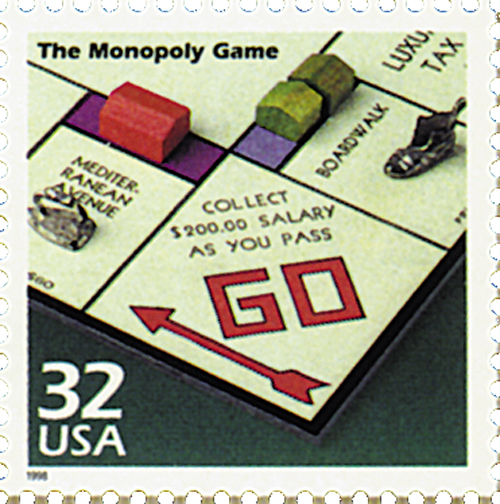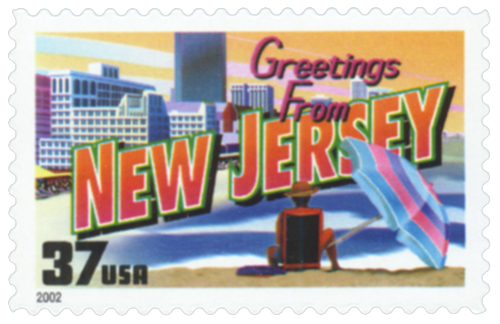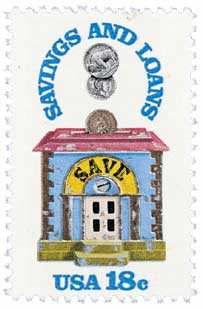
# 3185o FDC - 1998 32c Celebrate the Century - 1930s: The Monopoly Game
32¢ The Game of Monopoly
Celebrate the Century – 1930s
City: Cleveland, OH
Quantity: 12,533,000
Printed By: Ashton–Potter (USA) Ltd
Printing Method: Lithographed, engraved
Perforations: 11.5
Color: Multicolored
Monopoly’s “Birthday”

According to Parker Brothers, March 19, 1935 is the Monopoly board game’s official birthday. That was the date they purchased the rights to the game, but its story began several years earlier…
Some credit the invention of the Monopoly game to Lizzie Magie, who created The Landlord’s Game in 1903. She created the game for adults to illustrate Henry George’s single-tax theory and to show the negative side of large private monopolies. She patented the game in 1904 and began self-publishing it in 1906. The game offered two sets of rules – one in which everyone was rewarded when wealth was created, and another where players built monopolies to defeat their opponents.

Magie’s game was popular among college students and their professors. Some teachers taught their students the game and encouraged them to develop their own. Magie renewed her patent in 1923.
According to one account, one day in 1932, Charles Darrow went to a childhood friend’s house for dinner. The hosts introduced him to The Landlord’s Game, and they played it several times. Darrow took a set of written rules and developed his own game based on The Landlord’s Game.

Darrow’s original account is a bit different. He called that one evening in 1930, he was sitting at his kitchen table reminiscing with friends when he remembered the glory days spent on vacation in Atlantic City. Suddenly, an idea arose in his mind. He began jotting down the names of streets that he remembered from his vacations. He then added four railroads and two utility companies. Soon, he had a giant game board made out of a tablecloth. Later, he added houses, hotels, and game tokens.
When he was finished, Darrow had the makings of a new board game and a much-needed diversion for the millions of people who were jobless. Finally, these people could take their minds off their financial problems and remember what it was like to have money – even if only for a short time.

Darrow’s original game consisted of a piece of oilcloth on the board and handwritten cards. He used leftover pieces of wooden molding for the houses and hotels. And his nieces suggested he use metal charms, like those on their bracelets, for the game pieces. The original 10 game pieces were an iron, purse, lantern, race car, thimble, shoe, top hat, battleship, cannon, and rocking horse.

Soon, Darrow’s Monopoly became so popular he couldn’t keep up production, and he offered it to Parker Brothers. However, they told him the game was too complicated and turned him down. Darrow, like so many others at that time, was out of work and all the more determined. He produced the game himself. A Philadelphia department store bought 5,000 of the homemade Monopoly games and they flew off the shelves. Soon the demand was greater than Darrow could manage. Back he went to Parker Brothers, who saw the game’s popularity and bought the rights to it on March 19, 1935.

Within a month of the purchase, Parker Brothers learned that Darrow may not have been the game’s only inventor. They reached out to Lizzie Magie and bought the rights to her game later in 1935. It was also at this time that they met with Darrow, who admitted that he had copied the game from a friend’s board. They revised his license agreement to prevent a court case over the rights. Monopoly became the best-selling game in America within its first year. Parker Brothers was producing 35,000 copies a week, which sold for $2 each.
Over the years, new versions of the game were released for a variety of interests and locations. In 1973, the first Monopoly World Championship was held. In 1988, a San Francisco jeweler created the most expensive set in the world. Valued at $2 million, it had 18- and 23-karat gold and 42 diamonds. In 2008, a group of 3,000 people set a world record for the most people playing the game at once.
32¢ The Game of Monopoly
Celebrate the Century – 1930s
City: Cleveland, OH
Quantity: 12,533,000
Printed By: Ashton–Potter (USA) Ltd
Printing Method: Lithographed, engraved
Perforations: 11.5
Color: Multicolored
Monopoly’s “Birthday”

According to Parker Brothers, March 19, 1935 is the Monopoly board game’s official birthday. That was the date they purchased the rights to the game, but its story began several years earlier…
Some credit the invention of the Monopoly game to Lizzie Magie, who created The Landlord’s Game in 1903. She created the game for adults to illustrate Henry George’s single-tax theory and to show the negative side of large private monopolies. She patented the game in 1904 and began self-publishing it in 1906. The game offered two sets of rules – one in which everyone was rewarded when wealth was created, and another where players built monopolies to defeat their opponents.

Magie’s game was popular among college students and their professors. Some teachers taught their students the game and encouraged them to develop their own. Magie renewed her patent in 1923.
According to one account, one day in 1932, Charles Darrow went to a childhood friend’s house for dinner. The hosts introduced him to The Landlord’s Game, and they played it several times. Darrow took a set of written rules and developed his own game based on The Landlord’s Game.

Darrow’s original account is a bit different. He called that one evening in 1930, he was sitting at his kitchen table reminiscing with friends when he remembered the glory days spent on vacation in Atlantic City. Suddenly, an idea arose in his mind. He began jotting down the names of streets that he remembered from his vacations. He then added four railroads and two utility companies. Soon, he had a giant game board made out of a tablecloth. Later, he added houses, hotels, and game tokens.
When he was finished, Darrow had the makings of a new board game and a much-needed diversion for the millions of people who were jobless. Finally, these people could take their minds off their financial problems and remember what it was like to have money – even if only for a short time.

Darrow’s original game consisted of a piece of oilcloth on the board and handwritten cards. He used leftover pieces of wooden molding for the houses and hotels. And his nieces suggested he use metal charms, like those on their bracelets, for the game pieces. The original 10 game pieces were an iron, purse, lantern, race car, thimble, shoe, top hat, battleship, cannon, and rocking horse.

Soon, Darrow’s Monopoly became so popular he couldn’t keep up production, and he offered it to Parker Brothers. However, they told him the game was too complicated and turned him down. Darrow, like so many others at that time, was out of work and all the more determined. He produced the game himself. A Philadelphia department store bought 5,000 of the homemade Monopoly games and they flew off the shelves. Soon the demand was greater than Darrow could manage. Back he went to Parker Brothers, who saw the game’s popularity and bought the rights to it on March 19, 1935.

Within a month of the purchase, Parker Brothers learned that Darrow may not have been the game’s only inventor. They reached out to Lizzie Magie and bought the rights to her game later in 1935. It was also at this time that they met with Darrow, who admitted that he had copied the game from a friend’s board. They revised his license agreement to prevent a court case over the rights. Monopoly became the best-selling game in America within its first year. Parker Brothers was producing 35,000 copies a week, which sold for $2 each.
Over the years, new versions of the game were released for a variety of interests and locations. In 1973, the first Monopoly World Championship was held. In 1988, a San Francisco jeweler created the most expensive set in the world. Valued at $2 million, it had 18- and 23-karat gold and 42 diamonds. In 2008, a group of 3,000 people set a world record for the most people playing the game at once.













